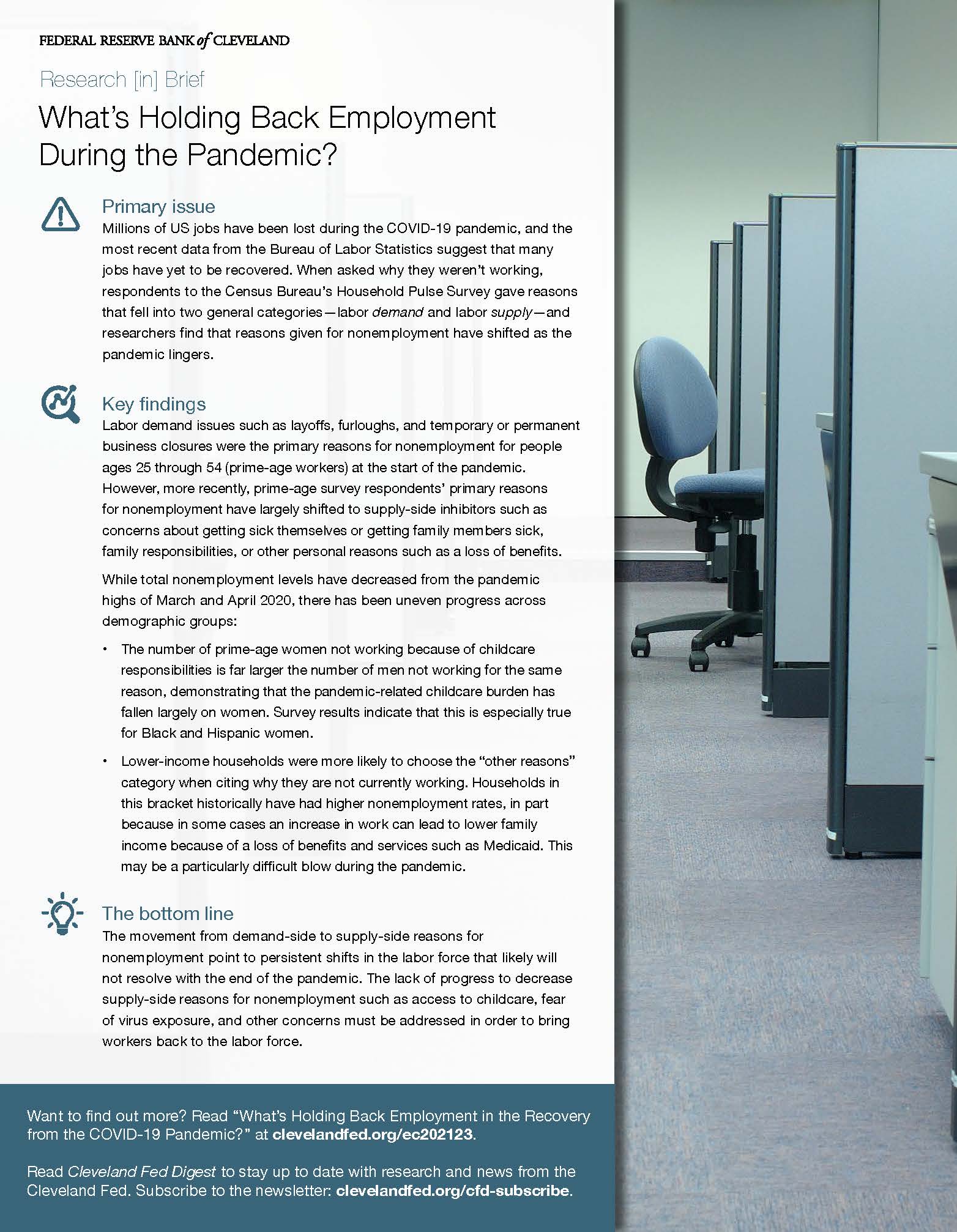- Share
Research [in] Brief: What’s Holding Back Employment during the Pandemic?
Infographic

Full text
Primary issue
Millions of US jobs have been lost during the COVID-19 pandemic, and the most recent data from the Bureau of Labor Statistics suggest that many jobs have yet to be recovered. When asked why they weren’t working, respondents to the Census Bureau’s Household Pulse Survey gave reasons that fell into two general categories—labor demand and labor supply—and researchers find that reasons given for nonemployment have shifted as the pandemic lingers.
Key findings
Labor demand issues such as layoffs, furloughs, and temporary or permanent business closures were the primary reasons for nonemployment for people ages 25 through 54 (prime-age workers) at the start of the pandemic. However, more recently, prime-age survey respondents’ primary reasons for nonemployment have largely shifted to supply-side inhibitors such as concerns about getting sick themselves or getting family members sick, family responsibilities, or other personal reasons such as a loss of benefits.
While total nonemployment levels have decreased from the pandemic highs of March and April 2020, there has been uneven progress across demographic groups:
- The number of prime-age women not working because of childcare responsibilities is far larger the number of men not working for the same reason, demonstrating that the pandemic-related childcare burden has fallen largely on women. Survey results indicate that this is especially true for Black and Hispanic women.
- Lower-income households were more likely to choose the “other reasons” category when citing why they are not currently working. Households in this bracket historically have had higher nonemployment rates, in part because in some cases an increase in work can lead to lower family income because of a loss of benefits and services such as Medicaid. This may be a particularly difficult blow during the pandemic.
The bottom line
The movement from demand-side to supply-side reasons for nonemployment point to persistent shifts in the labor force that likely will not resolve with the end of the pandemic. The lack of progress to decrease supply-side reasons for nonemployment such as access to childcare, fear of virus exposure, and other concerns must be addressed in order to bring workers back to the labor force.
Want to find out more? Read “What’s Holding Back Employment in the Recovery from the COVID-19 Pandemic?” at clevelandfed.org/ec202123.
Read Cleveland Fed Digest to stay up to date with research and news from the Cleveland Fed. Subscribe to the newsletter: https://www.clevelandfed.org/cfd-subscribe.
Related resources
What’s Holding Back Employment in the Recovery from the COVID-19 Pandemic?
Bureau of Labor Statistics data indicate that five million jobs lost during the pandemic have not been recovered, but it is difficult to ascertain how many workers will return to available jobs. The Census Bureau’s Household Pulse Survey includes a detailed set of reasons for nonemployment, including households’ responses to the pandemic that provide a new perspective on reasons for not working.

